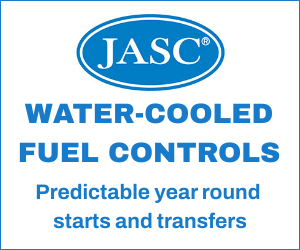By Jason Makansi, principal, Pearl Street, a Tucson-based consultancy
All of us can point to truly memorable events and periods in our careers. A 10-day period that began with a tour and deep dive of Los Angeles Department of Water & Power’s (Ladwp) Beacon storage facility in the Mojave desert and ended with the catastrophic fire and explosion at Arizona Public Service Co’s (APS) McMicken storage facility, Surprise, Ariz, certainly qualifies. Within those two endpoints was attendance at Electric Power Research Institute’s (EPRI) Energy Storage Integration Council (ESIC) meeting and the Energy Storage Association’s (ESA) Annual Conference, both in Phoenix.
The week was a technology-development roller coaster. First, on Thursday (Apr 11, 2019), was the “high” of the 20 MW/10 MWh Ladwp facility essentially meeting all of its performance expectations in the first six months of operation. The ESIC meeting the following Monday tempered things, as one might expect, as utility engineers and vendors vigorously investigated technical challenges, standards, performance definitions, reliability goals, and life-cycle aspects of grid-scale storage.
This was followed by the unbridled optimism of the ESA conference and expo, where one rep of a prominent storage system vendor noted privately, “We’re now responding to quality grid-scale RFPs and RFQs every day.” At the opening keynote session, ESA representatives proclaimed their vision as 35,000 MW of storage by 2025, certainly a “stretch” goal based on the reported 770 MWh of grid-connected storage installed in 2018.
Inadvertently well-timed was ESA’s announcement of its Industry Corporate Responsibility Initiative (CRI) to establish best practices in lifecycle, safety, and end-of-life decisions.
By Friday, the first accounts of the 2-MW/2-MWh battery facility catastrophic event at APS’ McMicken substation were in the papers.
The path to commercializing and scaling-up a wholesale new electricity grid asset class is never linear. Another memorable career period was when advanced F-class gas turbines were being air-lifted from around the world in the early to mid 1990s to repair catastrophic failures and address design flaws. In the history books, you’ll find the painful and deadly period of boiler explosions in the early part of the last century.
Challenges abound. While there’s always healthy tension between the marketing and promotion in a sector and the more sobering engineering, operations, and maintenance activities, the ESIC and the ESA meetings were back-to-back days of contrast. The following broad challenge areas below discussed at ESIC make the stretch goal of 35 GW by 2025 ambitious, especially considering the APS event and other incidents which have come to light since then.
Parasitic power. Long-time residents of the desert Southwest are fond of saying air conditioning (a/c) isn’t just a necessity, it’s life support. Apparently, that’s true of battery enclosures, too. The backup engine generators at the Beacon facility, for example, are sized based on cooling the battery enclosures for up to seven days if site power is lost. One attendee at the ESIC noted that the a/c has to be running whether the batteries are operating or not.
Parasitic power consumption can be a hit on projects planned for a low total operating hours.
Other sub-topics which arose were electricity rates for charging batteries (wholesale, retail), how charging power is metered (separate circuit?), and what the impacts will be on the Investment Tax Credit.
State of Charge (SOC). This essential battery performance parameter continues to be a source of much confusion. SOC is a measure of the battery’s available capacity, reported as a percentage of the battery’s rated capacity. Overcharging or over-discharging a battery affects the internal cell structure.
Improperly managing the SOC impacts performance, especially degradation of the cells over time and safety. One owner/operator noted that the definition of SOC is not consistent across vendors. Also, it’s not an open standard, and the battery control schemes to manage SOC, critical to overall performance, are proprietary.
Every charge/discharge cycle imposes a cost on the system, another stated, who then asked, “Do you restore the SOC quickly or slowly, and when, at night when electric rates are low?” There was a high degree of consensus that ESIC should focus on degradation rates for warranty claims. The degradation sub-model in the performance model EPRI is building has to be robust, because “vendors say you have to run the battery in exactly the mode specified for the degradation warranty to be valid.” An attendee observed, “SOC is not a measured data point, but instead a vendor estimate.”
Degradation test methods, models, and metrics received the highest rating and endorsements for ESIC’s work product deliverables.
Safety. Codes and standards were the subject of some controversy. “Safety Test Method for Evaluation Thermal Runaway Fire Propagation in Battery Energy Storage Systems” (UL 9540A), derived from work in New York City and being adopted by California, is the applicable code for fire protection, but still a work in progress, according to attendees.
Another standard discussed was NFPA 855, “Standard for the Installation of Stationary Energy Storage Systems.” At least one vendor claimed that meeting UL 9540A and NFPA 855 is “expensive and logistically difficult” because to get the right data, you have to deliberately induce a thermal runaway to see what happens.
When considering safety, one has to think in terms of four levels—battery cell, module, unit, and complete installation. At the module level, one design recommendation is that there be 3 ft between the enclosure wall and each 250-kW module, unless the battery is confirmed to pass the safety test.
Little information on cause has been reported out of APS on McMicken, but one source at the meeting noted that power electronics were the source of at least two high profile battery fires. Improper grounding has also led to fires.
Performance. Basic definitions, like efficiency, are not well defined. Storage advocates key in on “benefits stacking” for economic evaluations, essentially monetizing the various functions a battery facility can accommodate—such as transmission-line voltage stability, frequency control, peaking-power supply, taking power out of the grid (charging), short-term discharge, long-term discharge, black start, and other ancillary services.
Unfortunately, designing the control system to handle all of these functions is complicated, impacts on warranties can be severe, performance metrics for each function are ambiguous, and accurate forecasting of such things as weather and loads is required. The fact is, performance and reliability standards for grid-scale storage are just now being formulated.
ESIC is now incorporating reliability into the generic storage model (called StorageVET) it is developing for the industry. Plus, users note the model needs to be adjusted to reflect the constraints in different ISO regions. Currently, it is described as “very California-centric.”
Other issues which came up include the following:
-
- Vendor difficulties with utility interconnection requirements and compatibility with utility SCADA systems.
- Commercial inverter products designed for solar PV, not batteries.
- Clear upfront costs of facilities, unclear lifecycle and O&M costs (failure rates, battery degradation, end-of-life recycling).
- Compliance with cybersecurity rules, division of responsibilities, and enforcement mechanisms (a white paper is available), especially when vendors need regular access for maintenance and control-related activities. Incorporating firmware upgrades in cybersecurity compliance was identified as a key issue.
- Defining availability, a big factor in procurement, especially when a utility needs to standardize across 20-30 projects (according to one attendee).
To learn more about industry efforts to standardize on some of these performance issues, consider reviewing IEEE 1547-2018, “Standard for Interconnection and Interoperability of Distributed Energy Resources with Associated Electric Power System Interfaces,” which includes energy storage as a DER.
ESA activities. Being DC-based, ESA officials discussed in the keynote session FERC Order 841, which removes barriers to storage (in wholesale markets, which FERC has jurisdiction over); House of Representatives Bill 2096 (Energy Storage Tax Incentive and Deployment Act) which offers to stand-alone storage projects the same investment tax credit (ITC) benefits (30% tax credit) enjoyed by solar; storage procurement targets now issued in several states; the “clean peak” standard in Massachusetts, and expanding state integrated resource plans (IRP) to include storage.
In light of McMicken, the Corporate Responsibility Initiative undoubtedly has risen in priority. According to info at the ESA website, signatories to the initiative pledge to “engage in a good faith effort to optimize performance, minimize risk, and serve as an exemplary corporate citizen in the manufacturing, deployment, implementation, and operation of energy-storage projects across the US.”
Best practices are being established by an inaugural task force in the areas of potential operational hazards, end of life and recycling, and responsible supply-chain practices.
Catastrophic events. According to press accounts, eight firefighters were injured, four hospitalized, by the explosion which occurred at McMicken after they had arrived and begun to fight the fire. All APS has said about the event, pending the results of an investigation, is that the facility experienced an equipment failure. It is important to acknowledge that the equipment could have been the battery, inverter/power electronics, or balance-of-plant components.
Press accounts have also noted that Korea has experienced 21 fires at lithium-ion battery facilities; incidents in China with electric busses, and in this country with Tesla electric vehicles, have gone unreported, or underreported.
APS also experienced a fire with an earlier, smaller storage demonstration project in 2013. Based on public statements, the utility’s executives are undeterred in their pursuit of 850 MW of grid-scale storage by 2025.
Fluence, the joint venture between AES Energy Storage LLC and Siemens AG, is the supplier of record for the McMicken facility. It is responsible for close to 800 MW of storage around the world; this is reported to be its first major safety incident, according to an article in Greentech Media, Apr 23, 2019.
About the author
Jason Makansi’s experience in grid-scale storage spans more than three decades. As principal of Pearl Street, an independent consulting firm, he was executive director for two separate DC-based policy organizations (2001-2004, 2009-2013) focused on grid-scale storage; was principal investigator for two private-label storage executive reports issued by other consulting firms (2015, 2013); led a reverse trade mission on grid-scale storage for the US Trade & Development Association (2016); assessed market and economic potential for two advanced storage technology concepts, one for a Fortune 500 firm (2007, 2010), one for a fuel cell supplier (2011); acted as advisor of record for a $5-million venture capital raise for an ultra-capacitor firm (2011); and evaluated US markets and applications for a Japanese Fortune 50 energy-systems supplier seeking entry for its lithium-ion battery technology (2010).
He evaluated and reported on all leading grid-scale storage technology RD&D, applications, and demonstration facilities during his 18-year tenure at Power Magazine (1981-2000). Since CCJ’s founding in 2003, his articles on storage have appeared exclusively in the COMBINED CYCLE Journal and its sister publication, GRiDToday, and CCJ-ONsite.









